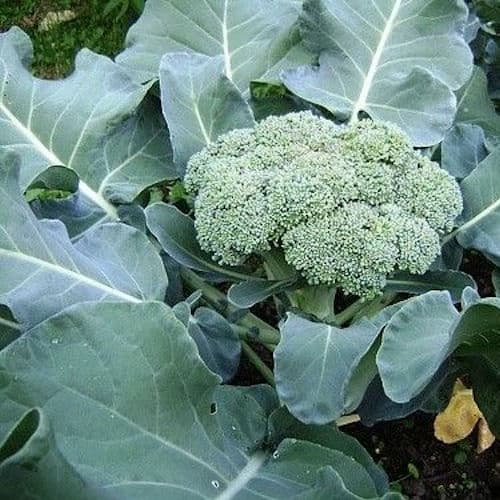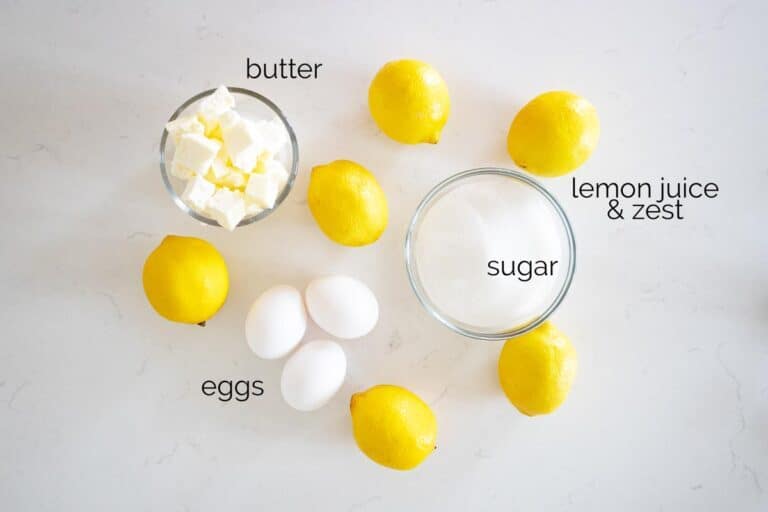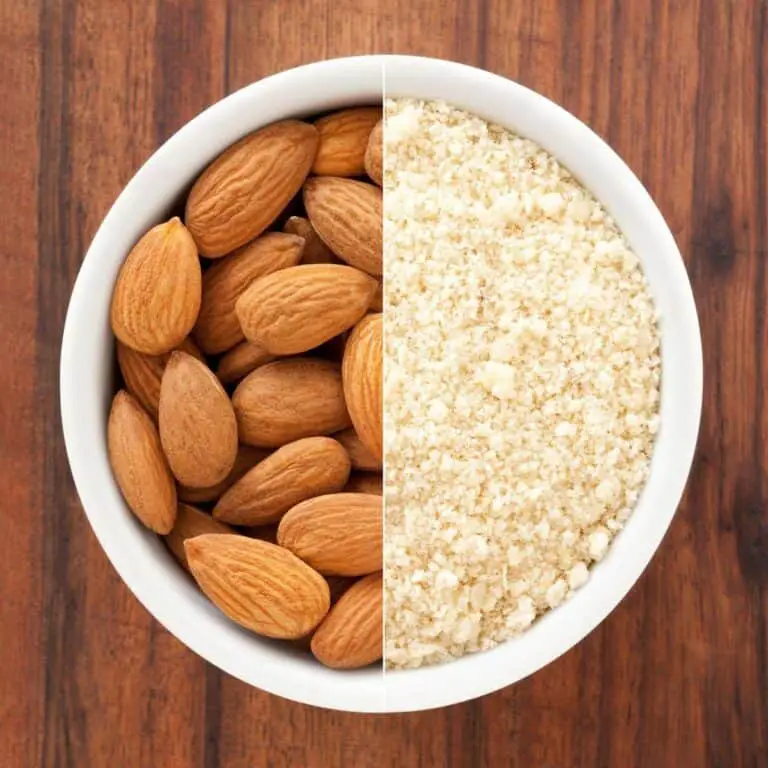How To Clean Broccoli From Worms and Bugs? Clean and Healthy Eating

When it comes to maintaining a clean and healthy diet, broccoli often finds its way onto our plates. This nutrient-packed vegetable offers numerous health benefits, but it’s crucial to ensure that it is free from worms and bugs before consumption.
While the idea of insects in our food may be off-putting, it’s not uncommon to find them in broccoli due to its natural growth process. However, with proper cleaning techniques, you can eliminate these unwanted guests and enjoy your broccoli worry-free.
In this article, we will delve into the essential steps and methods for effectively cleaning broccoli, ensuring that your meals are not only delicious but also safe and healthy. Let’s embark on a journey to discover the secrets of cleaning broccoli and maintaining a clean and healthy eating routine.
Understanding the Importance of Cleaning Broccoli
Broccoli, with its vibrant green florets and numerous health benefits, is a beloved vegetable in many households. However, the importance of cleaning broccoli thoroughly before consumption cannot be overstated. Beyond the desire for a clean and visually appealing plate, there are compelling reasons to ensure that your broccoli is free from worms and bugs.
WARNING
Consuming broccoli that has not been properly cleaned poses potential risks to your health. Worms and bugs can carry harmful bacteria or parasites that may cause digestive discomfort or even foodborne illnesses.
By ingesting these unwelcome guests, you expose yourself to the possibility of contracting infections or experiencing gastrointestinal issues. To safeguard your well-being and promote optimal health, it is crucial to make cleaning broccoli a non-negotiable step in your food preparation routine.
Clean and healthy eating extends beyond mere aesthetics and safety concerns. When you invest time and effort into thoroughly cleaning your broccoli, you are actively prioritizing your overall well-being. By removing any potential contaminants, you ensure that you are consuming a vegetable that is as pure and nutritious as possible.
Furthermore, cleaning broccoli allows you to fully appreciate its natural flavor and texture. By removing any unwanted pests, you can enjoy the crispness and freshness of the florets without any interruptions. Clean broccoli provides a delightful culinary experience, allowing you to savor its earthy and slightly sweet taste.
In addition to the direct benefits to your health and palate, cleaning broccoli sets a positive example for mindful and responsible eating habits. By taking the time to clean and prepare your vegetables properly, you cultivate an awareness of the importance of food safety and hygiene. This mindfulness can extend to other areas of your culinary endeavors, inspiring you to prioritize cleanliness and care throughout your meal preparation process.
Signs of Worm and Bug Infestation in Broccoli
While broccoli is undoubtedly a nutritious and delicious vegetable, it is not immune to the presence of worms and bugs. These unwanted intruders can find their way into the tightly packed florets, hiding within the green canopy of this vibrant vegetable.
To ensure clean and healthy eating, it is crucial to be aware of the signs that indicate a possible infestation. By knowing what to look for, you can promptly identify any unwelcome guests and take the necessary steps to clean your broccoli effectively.
- Small holes or tunnels on the surface of the florets.
- Discoloration, such as browning or yellowing of the florets.
- Movement within the florets, indicating the presence of live pests.
- Unusual or foul odor emanating from the broccoli.
- Visual signs of worms or larvae.
- Irregular patterns of tiny holes on the surface of the florets.
- Changes in color deviating from the vibrant green hue.
- Presence of decaying or decomposing matter.
- Any strong, pungent odor coming from the broccoli.
It is important to note that finding worms or bugs in your broccoli does not necessarily mean the vegetable is unsanitary or of poor quality. Pests can find their way into even the most carefully cultivated crops. However, it is essential to address the situation promptly to ensure clean and healthy consumption. By being vigilant and aware of the signs of infestation, you can take the necessary steps to clean your broccoli thoroughly, eliminating any pests and minimizing potential health risks.

How To Clean Broccoli From Worms and Bugs
1. Preparing Broccoli for Cleaning
Before you begin the cleaning process, proper preparation is key. This includes storing broccoli correctly to maintain freshness, washing your hands and utensils to prevent cross-contamination, and creating a clean workspace. Let’s explore these preparatory steps in detail.
2. Soaking broccoli in a saltwater solution
One effective method for cleaning broccoli is using a saltwater solution. This natural solution helps to remove worms and bugs while also washing away dirt and other contaminants. To ensure effective cleaning, it’s crucial to use the proper salt-to-water ratio and consider factors such as duration and temperature. Here’s how to clean broccoli using a saltwater solution.
3. Rinsing Broccoli Under Running Water
After soaking broccoli in a saltwater solution, rinsing it thoroughly under running water is an important step to remove any remaining contaminants. By using cold, running water and paying attention to every nook and cranny, you can ensure your broccoli is clean and safe to eat. Let’s delve into the details of this rinsing process.
4. Utilizing a Vinegar Solution for Cleaning Broccoli
If you prefer an alternative cleaning method or want an extra layer of protection against pesticides and bacteria, you can use a vinegar solution. Vinegar is known for its cleaning properties and can be effective in removing pests from broccoli. Here’s how to utilize a vinegar solution to clean your broccoli effectively.
5. Scrubbing Broccoli to Remove Stubborn Contaminants
While soaking and rinsing are effective in most cases, some contaminants may require additional attention. To tackle stubborn debris and pests, it’s necessary to scrub the broccoli using a vegetable brush or cloth. By paying close attention to crevices and hard-to-reach areas, you can ensure a thorough cleaning. Let’s explore the proper technique for scrubbing broccoli.
Drying Broccoli and Storing Properly
After cleaning your broccoli, it’s crucial to dry it properly to prevent bacterial growth. Excess moisture can create an environment where bacteria thrive, compromising the safety of your broccoli. Once dried, it’s important to store broccoli correctly to maintain its freshness. Here are the techniques for drying and storing broccoli effectively.
Safe Cooking Methods for Broccoli
While cleaning broccoli is crucial for removing pests, incorporating safe cooking methods provides an additional layer of assurance for ensuring food safety. Properly cooked broccoli not only eliminates any remaining pests but also ensures that it is safe for consumption.
When considering cooking methods, it is essential to strike a balance between eliminating pests and preserving the vegetable’s nutritional value. Let’s delve into some safe cooking methods for broccoli that will help you enjoy a delicious and pest-free meal.
- Steaming: Steaming broccoli is a gentle and effective cooking method that helps retain its vibrant color, crisp texture, and nutritional value. To steam broccoli, start by cutting it into florets of similar size. Place the florets in a steamer basket or a colander suspended over a pot of boiling water. Cover the pot with a lid and steam the broccoli for about 5 to 7 minutes, or until it becomes tender yet still slightly crisp. Steaming broccoli not only ensures the elimination of any remaining pests but also preserves its valuable nutrients.
- Boiling: Boiling is a common cooking method for broccoli that effectively eliminates pests while providing a soft and tender texture. To boil broccoli, fill a pot with water and bring it to a rolling boil. Add the broccoli florets to the boiling water and cook for about 3 to 5 minutes, or until they are fork-tender. However, be cautious not to overcook the broccoli, as it can result in the loss of nutrients and a mushy texture. Once boiled, drain the broccoli and run it under cold water to stop the cooking process and preserve its vibrant color.
- Roasting: Roasting broccoli not only eliminates pests but also imparts a delightful caramelized flavor. Preheat your oven to around 425°F (220°C). Toss the broccoli florets in olive oil, sprinkle with salt and pepper, and spread them in a single layer on a baking sheet. Roast the broccoli for approximately 15 to 20 minutes, or until it becomes tender and develops a golden brown color. Roasting broccoli at a high temperature not only ensures the removal of pests but also adds depth and complexity to its taste profile.
- Stir-frying: Stir-frying is a quick and flavorful method that helps eliminate pests while maintaining a crunchy texture. Heat a small amount of oil in a pan or wok over medium-high heat. Add the broccoli florets and stir-fry for about 3 to 5 minutes, or until they become vibrant green and tender-crisp. Stir-frying broccoli ensures that it is cooked thoroughly, removing any remaining pests, while preserving its crispness and nutritional value.
Remember, regardless of the cooking method you choose, it is important to avoid overcooking broccoli to preserve its nutritional content. Overcooked broccoli not only loses its vibrant color and texture but may also result in nutrient degradation. By following these safe cooking methods, you can confidently enjoy a delicious and pest-free broccoli dish while reaping the numerous health benefits it offers.
Tips for Bug-Free Broccoli
In addition to the cleaning process, there are a few preventive measures you can take to minimize the likelihood of encountering worms or bugs in your broccoli:
- Inspect before purchasing: When buying broccoli, carefully examine each head for any visible signs of infestation. Choose firm, compact heads with a vibrant green color and avoid those with extensive discoloration or damage.
- Buy organic: Consider purchasing organic broccoli. While it doesn’t guarantee bug-free broccoli, organic farming practices generally involve fewer pesticides, which can contribute to a reduced likelihood of infestation.
- Grow your own: If you have the space and inclination, you can grow your own broccoli. By controlling the growing conditions, you can minimize the chances of pests infesting your crops.
- Freezing the broccoli: If you’re planning to freeze broccoli, blanch it before freezing. Blanching helps kill any remaining bugs or larvae and preserves the vegetable’s quality. After blanching, plunge the broccoli into an ice bath to stop the cooking process, then drain and pat dry before placing it in freezer-safe bags or containers.
- Rotate your broccoli: If you have a habit of buying broccoli regularly, make sure to rotate your stock. Use the older heads of broccoli first to minimize the chances of bugs or worms developing.
- Proper storage: When storing broccoli in the refrigerator, ensure it is dry and loosely wrapped in a paper towel or a perforated plastic bag. Avoid sealing it tightly, as moisture can accumulate and promote the growth of bacteria or mold.
- Wash before consuming: Regardless of whether you plan to eat your broccoli raw or cooked, always give it a thorough wash before consuming. This step helps remove any surface dirt or residue that may be present.
Conclusion
Cleaning broccoli from worms and bugs is an essential step to enjoying this nutritious vegetable safely. By following the outlined methods and techniques, you can effectively remove pests and contaminants, maintaining a clean and healthy eating routine. Remember to be vigilant when identifying signs of infestation, properly store and prepare broccoli, and utilize appropriate cleaning methods. By adopting these practices and incorporating clean and healthy eating habits, you can savor the goodness of broccoli with peace of mind. Stay mindful of food safety, and enjoy your clean and healthy meals!
FAQs
What happens if you eat broccoli with worms?
Consuming broccoli with worms is generally considered safe, but it can be unappetizing and may cause digestive discomfort.
Can you still eat broccoli if it has bugs?
Yes, you can still eat broccoli if it has bugs. However, it is advisable to clean the broccoli thoroughly to remove the bugs before consumption.
How do you get rid of worms in broccoli?
Soaking broccoli in a saltwater solution, rinsing it under running water, and scrubbing it gently can effectively remove worms from broccoli.
Is it safe to eat raw broccoli with bugs?
While raw broccoli with bugs is generally safe to eat, it is recommended to clean and cook broccoli properly to eliminate any potential risks.
What are the health risks of consuming broccoli with worms?
The health risks associated with consuming broccoli with worms are minimal. However, it’s important to ensure proper cleaning and cooking to prevent any potential issues.
How often should I clean broccoli before consumption?
It is advisable to clean broccoli every time before consumption, regardless of whether you suspect it has worms or bugs. Regular cleaning helps ensure food safety.






